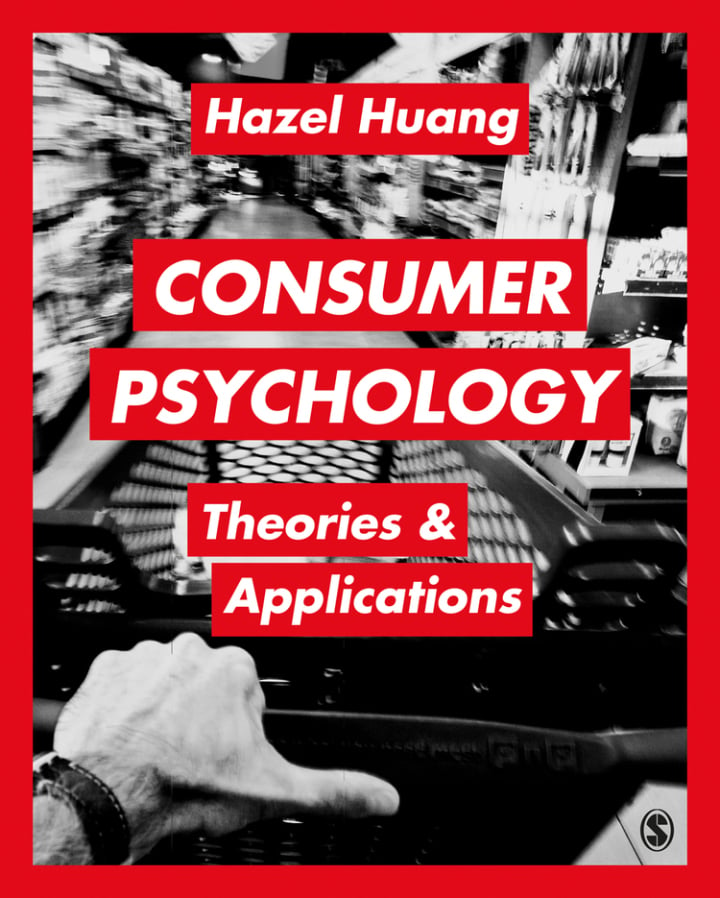
Consumer Psychology 1st Edition - Theories & Applications
PUBLISHER: Sage
Trường ĐH, Nhóm, Thư Viện: Gọi 0915920514 để báo giá eBook hosting trên Vital Source hoặc mua Sách In
Tâm lý người tiêu dùngLý thuyết & Ứng dụngTâm lý người tiêu dùng: Lý thuyết và ứng dụng là cuốn sách giáo khoa đầu tiên thảo luận một cách có hệ thống về nhiều lý thuyết tâm lý học và ứng dụng của chúng trong hành vi của người tiêu dùng theo phong cách dễ tiếp cận. Các lý thuyết tâm lý được lựa chọn bao gồm cả lý thuyết cổ điển và sự phát triển đương đại, đồng thời các ứng dụng trong hành vi của người tiêu dùng được rút ra từ nghiên cứu tiên tiến được củng cố bởi các lý thuyết và ý nghĩa thực tiễn. Tại sao những người có ảnh hưởng có số lượng người theo dõi ít hơn đôi khi lại hiệu quả hơn những người có ảnh hưởng lớn? Tại sao âm thanh của các thương hiệu như Coca-Cola và Kit Kat lại hấp dẫn người tiêu dùng? Âm nhạc, mùi hương hoặc ánh sáng ảnh hưởng đến người mua hàng như thế nào? Tại sao việc sử dụng tiêu dùng để nâng cao lòng tự trọng lại có thể tiêu cực đối với sức khỏe của người tiêu dùng? Người đọc sẽ khám phá những câu hỏi này và nhiều hơn nữa. Cuốn sách giáo khoa này là tài liệu cần thiết cho những sinh viên tiếp thị nâng cao và cả những sinh viên tâm lý học ứng dụng đang tìm hiểu thế giới kinh doanh. Nó bao gồm một chương về phương pháp nghiên cứu về tâm lý người tiêu dùng và cũng có thể cung cấp hướng dẫn quan trọng cho những người hoàn thành dự án luận văn về tâm lý người tiêu dùng. Hazel Huang là Nhà tiếp thị đặc quyền của Viện Tiếp thị Chartered và là Trợ lý Giáo sư về Tiếp thị tại Trường Kinh doanh Đại học Durham, Vương quốc Anh.
Online ResourcesAbout the AuthorPrefaceAcknowledgements1 Introduction1.1 Main schools of psychologyA brief history of psychology as an academic disciplineFunctionalismBehaviourismHumanistic psychologyCognitivismSocial psychology1.2 Development of consumer psychologyA brief historical accountThe evolution of the theoretical development in consumer psychology1.3 Outline of this book1.4 SummaryDiscussion questionsFurther readingNotes2 Consumer Knowledge2.1 Introduction2.2 MemorySensory memoryShort-term (working) memoryLong-term memory2.3 KnowledgeThe psychological basisImplications for consumer behaviour2.4 SummaryDiscussion questionsFurther readingNotes3 Consumer Inference and Evaluation3.1 Introduction3.2 Category-based inferencesThe psychological basisImplications for consumer behaviour3.3 Causal inferencesThe psychological basisImplications for consumer behaviour3.4 Cognitive illusion: the framing effectThe psychological basisImplications for consumer behaviour3.5 SummaryDiscussion questionsFurther readingNotes4 Consumer Implicit Cognition4.1 Introduction4.2 The basics: the implicit–explicit distinction4.3 Implicit knowledgeThe psychological basisImplications for consumer behaviour4.4 Implicit learningThe influence at cognitive levelPerception without awarenessThe limitations4.5 SummaryDiscussion questionsFurther readingNotes5 Consumer Development and Socialisation5.1 Introduction5.2 Children consumers: from childhood to adolescenceThe psychological basisImplications for consumer behaviour5.3 Ageing consumersThe increasing importance of ageing consumersPhysiological changesChanges in decision-makingThe limitations5.4 SummaryDiscussion questionsFurther readingNotes6 Emotions in Consumer Behaviour6.1 Introduction6.2 The basics of emotionsA brief introduction of emotionHow do emotions influence?6.3 Positive emotionsHappinessPride6.4 Negative emotionsFearAngerRegret6.5 SummaryDiscussion questionsFurther readingNotes7 Consumer Motivation7.1 Introduction7.2 Motivation: a top-down perspectiveThe psychological basisImplications for consumer behaviour7.3 Motivation: a bottom-up perspectiveThe psychological basisImplications for consumer behaviour7.4 Self-regulationSelf-regulationSelf-regulation failureThe regulatory focus theory7.5 SummaryDiscussion questionsFurther readingNotes8 Consumer Identity – I Shop; Therefore, I am8.1 Introduction8.2 Self-identityWilliam James’s empirical selfBrand-as-personHiggins’s self-discrepancy theory8.3 Social identityThe psychological basisImplications for consumer behaviour8.4 Culture and the self: self-construalThe psychological basisImplications for consumer behaviour8.5 SummaryDiscussion questionsFurther readingNotes9 Environmental Psychology and Consumer Behaviour9.1 Introduction9.2 Key models of environmental psychology in consumer behaviourKey theories of environmental psychologyThe Mehrabian–Russell ModelBitner’s model of servicescape9.3 MusicThe psychological basisImplications for consumer behaviour9.4 ScentThe psychological basisImplications for consumer behaviour9.5 LightingThe psychological basisImplications for consumer behaviour9.6 TouchThe psychological basisImplications for consumer behaviour9.7 SummaryDiscussion questionsFurther readingNotes10 Evolutionary Psychology and Consumer Behaviour10.1 Introduction10.2 The basics of evolutionary psychologyCharles Darwin’s theory of evolutionWhat is evolutionary psychology?10.3 The survival drives – self-protectionThe psychological basisImplications for consumer behaviour10.4 The mating drivesMate attractionMate retention10.5 The affiliation drivesThe theory of reciprocal altruismStatus10.6 Reflection10.7 SummaryDiscussion questionsFurther readingNotes11 Consumer Well-Being11.1 Introduction11.2 Self-esteemThe psychological basisImplications for consumer behaviour11.3 PleasureThe psychological basisImplications for consumer behaviour11.4 SummaryDiscussion questionsFurther readingNotes12 Research Methods in Consumer Psychology12.1 Introduction12.2 Before choosing a method12.3 Qualitative methodsKey methodsSamplingData analysisReporting12.4 Quantitative methodsKey methodsSamplingData analysisReporting12.5 Ethical issues in research12.6 SummaryDiscussion questionsFurther readingNotesIndex















